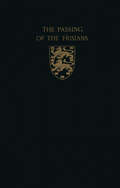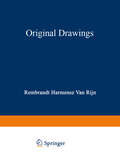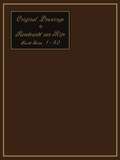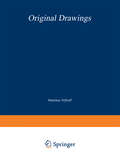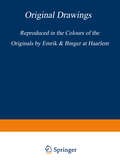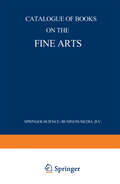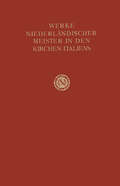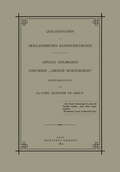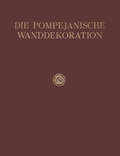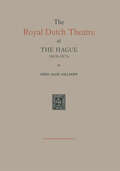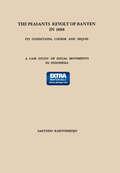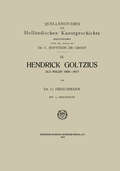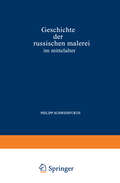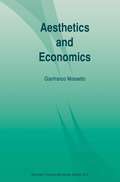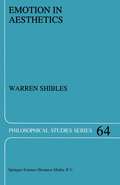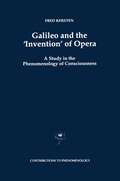- Table View
- List View
The Journalists and the July Revolution in France: The Role of the Political Press in the Overthrow of the Bourbon Restoration 1827–1830
by Daniel L. RaderThe "July Revolution" of 1830 in France overthrew the King, brought down the Bourbon dynasty, and ended the fifteen-year era known as the Restoration. lt established the "July Monarchy" of Louis-Philippe, citizen King of the Hause of Orleans, a regime also destined for extinction eighteen years later. Although the 1848 revolt is of somewhat greater domestic political importance and considerably greater in its European scope and its social implications, the July Revolution of 1830 should not be relegated to the lower Ievels of historical consciousness. Yet, in modern times, even in France, relatively few works have been published concerning either the Restoration or the revolution which terminated it. New interpretations, such as the excellent works of Bertier de Sauvigny and David Pinkney have awakened the enthusiasm of scholars; but in general, the intrinsic importance of this period has been slighted for nearly a century. There are reasons for this inattention: At first glance, the era seems retrograde, born of a conservative reaction; and placid - it falls between Napoleon's giant earthquake on one side, and on the other, the dynamics of European nationalism, imperialism, and the class struggle. But the Restoration was neither archaic nor calm. lt was, for all its manifest anachronisms, an age of rapid political, cultural, and social growth. France, during these years, was maturing and ripening toward nationhood - and toward the collision of many complex forces, culminating in revolution.
Detection of Low-Level Optical Signals: Photodetectors, Focal Plane Arrays and Systems (Solid-State Science and Technology Library #4)
by M.A. TrishenkovThis book is addressed to designers of photodetectors and photodetecting systems, designers of focal plane arrays, charge-coupled devices, specialists in IR technologies, designers of optoelectronic detecting, guiding and tracking systems, systems for IR direction finders, lidars, lightwave communication systems, IR imagers. All these specialists are united by one common purpose: they are all striving to catch the weakest possible optical signal. The most important characteristic of photosensitive devices is their detectivity, which determines the lowest level of optical signal they are able to detect above the noise level. These threshold characteristics define the most important tactical and technical parameters of the entire optoelectronic system, such as its range, resolution, precision. The threshold characteristics of optoelectronic system depend on many of its components; all designers agree, however, that the critically responsible part of the system is the photodetector [1]. By the end of the 1960s the physicists and the engineers were able to overcome many obstacles and to create photodetectors (at least single-element or few-element ones) which covered all the main optical bands (0. 4 . . . 2,2 . . . 3, 3 . . . 5,8 . . . 14 J. . Lm), carried out the detection almost without any loss (the quantum yield being as high as 0. 7 . . . 0. 9), and reduced the noise level to the lowest possible limit.
Original Drawings by Rembrandt Harmensz van Rijn: Reproduced in the Colours of the Originals by Emrik & Binger at Haarlem First Series
by Rembrandt Harmensz Van RijnOriginal Drawings: Reproduced in the Colours of the Originals by Emrik & Binger at Haarlem. Fourth series Part II
by Rembrandt Harmensz Van RijnOriginal Drawings by Rembrandt Harmensz Van Rijn: Reproduced in the Colours of the Originals by Emrik & Binger at Haarlem
by Rembrandt Harmensz RijnOriginal Drawings by Rembrandt Harmensz van Rijn: Reproduced in the Colours of the Originals by Emrik & Binger at Haarlem
by Rembrandt Harmensz Van RijnA Choice Collection of Books on Painting and Graphic Arts Including a Number of Works on Illuminated Manuscripts and Portrait Miniatures: From the Stock of Martinus Nijhoff Bookseller
by Martinus NijhoffWerke Niederländischer Meister in den Kirchen Italiens (Studien van het Nederlandsch Historisch Institut te Rome)
by T. H. FokkerDieser Buchtitel ist Teil des Digitalisierungsprojekts Springer Book Archives mit Publikationen, die seit den Anfängen des Verlags von 1842 erschienen sind. Der Verlag stellt mit diesem Archiv Quellen für die historische wie auch die disziplingeschichtliche Forschung zur Verfügung, die jeweils im historischen Kontext betrachtet werden müssen. Dieser Titel erschien in der Zeit vor 1945 und wird daher in seiner zeittypischen politisch-ideologischen Ausrichtung vom Verlag nicht beworben.
Quellenstudien zur Holländischen Kunstgeschichte: Arnold Houbraken und Seine „Groote Schouburgh“ (Quellenstudien zur Holländischen Kunstgeschichte #5)
by Arnold HoubrakenNetherlands Quarterly for the History of Art
by C. Broos J. P. Filedt P. Hecht E. De Jongh G. Schwartz E. TaverneDie Pompejanische Wanddekoration vom Zweiten bis Zum Vierten Stil: Zweiter Band Erster Teil Text
by H. G. BeyenDie fortgesetzte Erscheinung dieses Buches hat sich nach der Publikation des ersten Bandes (1938) aus mehreren Grunden sehr verzogert. Urn sie nicht noch Hinger aufschieben zu miissen, habe ich den zweiten Band nun gar in zwei HaIften geteilt 1). Seit dem Abschluss des Manuskripts des ersten Bandes sind mehrere Arbeiten erschienen, die sich ganz oder teilweise auf unseren Gegenstand iiberhaupt, dagegen nur wenige, die sich ausschliesslich auf den zweiten Stil beziehen (s. die Arbeiten Littles). Die meisten der Arbeiten sind in Band II 1 an den betreffenden Stellen zitiert oder werden in den folgenden Banden zitiert werden. Ausserdem findet man sie zum Teil im Verzeichnis der Abkiirzungen. Die wichtigeren werden S. 3 Anm. 4 erwahnt, einige hebe ich hier sogleich im Text hervor. Das 1944 erschienene Buch Chr. Dawsons hat unsere Kenntnis der "pompejanischen" Wandmalerei und besonders des dritten Stils merklich weitergebracht. Seine Ergebnisse werden zumal im dritten Band ver wertet werden. P. Grimal hat in seinem faszinierenden Werke iiber die romischen Garten viel zu der richtigen Beurteilung der romischen Wandmalerei beigesteuert. K. Schefold hat in seiner nach dem Kriege (1952) erschienenen "Pompejanischen Malerei" als Erster prinzipielle Fragen iiber deren Sinn und Ideengeschichte gestellt und damit die Erforschung des Gegenstandes auf neue Wege gefiihrt. Die spateren kleinen Schriften (1953-1958) setzen seine Gedanken in demselben Sinne fort. Seine "Wande Pompejis" (1957), ein "topographisches Verzeichnis der Bildmotive", fiillen endlich eine schon lange schmerzlich empfundene Liicke aus. A.
The Peasants’ Revolt of Banten in 1888: A Case Study of Social Movements in Indonesia
by Sartono KartodirdjoHendrick Goltzius als Maler, 1600–1617 (Quellenstudien zur Holländischen Kunstgeschichte #9)
by O. HirschmannDieser Buchtitel ist Teil des Digitalisierungsprojekts Springer Book Archives mit Publikationen, die seit den Anfängen des Verlags von 1842 erschienen sind. Der Verlag stellt mit diesem Archiv Quellen für die historische wie auch die disziplingeschichtliche Forschung zur Verfügung, die jeweils im historischen Kontext betrachtet werden müssen. Dieser Titel erschien in der Zeit vor 1945 und wird daher in seiner zeittypischen politisch-ideologischen Ausrichtung vom Verlag nicht beworben.
Geschichte der Russischen Malerei im Mittelalter
by Philipp Schweinfurth SchweinfurthDieser Buchtitel ist Teil des Digitalisierungsprojekts Springer Book Archives mit Publikationen, die seit den Anfängen des Verlags von 1842 erschienen sind. Der Verlag stellt mit diesem Archiv Quellen für die historische wie auch die disziplingeschichtliche Forschung zur Verfügung, die jeweils im historischen Kontext betrachtet werden müssen. Dieser Titel erschien in der Zeit vor 1945 und wird daher in seiner zeittypischen politisch-ideologischen Ausrichtung vom Verlag nicht beworben.
Aesthetics and Economics
by Gianfranco MossettoAesthetics and Economics is a pioneering effort at treating aesthetics from the point of view of economic theory, and addresses the contradictions which have arisen from economists' work in this field over the years. Starting from an historical review of the treatment of aesthetics in economic thought, Aesthetics and Economics goes through the integration of a number of recent advances in economic thinking with the main topics of aesthetics, from creativity to interpretation. The subject is systematically treated on the grounds of a restatement of the optimization analysis on non-consequentialist bases, starting from the Kantian definition of aesthetic judgement up to its contemporary developments. A specific information asymmetry characterizing the agents' behaviours arises from the aesthetic qualification of consumption, production and investment processes, thus affecting the usual equilibrium and optimization conditions, resulting in new institutional interventions in the market. `Certification' of the aesthetic nature of goods and stocks is needed and gives place to original market strategies and optimization problems.
Emotion in Aesthetics (Philosophical Studies Series #64)
by Warren A. ShiblesEmotion in Aesthetics is the first book on aesthetics to provide an extensive theory of emotion; application of the cognitive-emotive theory to aesthetics; analysis of the relationship between aesthetics, metaphor and emotion; a full theory of meaning and its application to aesthetics; discussion of the relationship between aesthetics, music and language in terms of phonetics, phonology and intonation; an analysis of humanistic aesthetics; a well-developed naturalistic theory of ethics as applied to aesthetics and emotion. Stress is placed on the views of contemporary philosophers as well as some of the main historical accounts of emotion in aesthetics. The important recent work on emotion has not hitherto been applied to aesthetics. As a result there is still much confusion in aesthetics about aesthetic emotion and related concepts, such as the expression theory of emotion. The present book has been written to show how the theory can be used to clarify the issue, resulting in a major breakthrough in aesthetics. In addition, the theory presented is valuable in relating aesthetics to ethics and humanism.
Epipolar Geometry in Stereo, Motion and Object Recognition: A Unified Approach (Computational Imaging and Vision #6)
by Gang Xu Zhengyou ZhangAppendix 164 3. A 3. A. 1 Approximate Estimation of Fundamental Matrix from General Matrix 164 3. A. 2 Estimation of Affine Transformation 165 4 RECOVERY OF EPIPOLAR GEOMETRY FROM LINE SEGMENTS OR LINES 167 Line Segments or Straight Lines 168 4. 1 4. 2 Solving Motion Using Line Segments Between Two Views 173 4. 2. 1 Overlap of Two Corresponding Line Segments 173 Estimating Motion by Maximizing Overlap 175 4. 2. 2 Implementation Details 4. 2. 3 176 Reconstructing 3D Line Segments 4. 2. 4 179 4. 2. 5 Experimental Results 180 4. 2. 6 Discussions 192 4. 3 Determining Epipolar Geometry of Three Views 194 4. 3. 1 Trifocal Constraints for Point Matches 194 4. 3. 2 Trifocal Constraints for Line Correspondences 199 4. 3. 3 Linear Estimation of K, L, and M Using Points and Lines 200 4. 3. 4 Determining Camera Projection Matrices 201 4. 3. 5 Image Transfer 203 4. 4 Summary 204 5 REDEFINING STEREO, MOTION AND OBJECT RECOGNITION VIA EPIPOLAR GEOMETRY 205 5. 1 Conventional Approaches to Stereo, Motion and Object Recognition 205 5. 1. 1 Stereo 205 5. 1. 2 Motion 206 5. 1. 3 Object Recognition 207 5. 2 Correspondence in Stereo, Motion and Object Recognition as 1D Search 209 5. 2. 1 Stereo Matching 209 xi Contents 5. 2. 2 Motion Correspondence and Segmentation 209 5. 2. 3 3D Object Recognition and Localization 210 Disparity and Spatial Disparity Space 210 5.
Galileo and the ‘Invention’ of Opera: A Study in the Phenomenology of Consciousness (Contributions to Phenomenology #29)
by F. KerstenIntended for scholars in the fields of philosophy, history of science and music, this book examines the legacy of the historical coincidence of the emergence of science and opera in the early modern period. But instead of regarding them as finished products or examining their genesis, or `common ground', or `parallel' ideas, opera and science are explored by a phenomenology of the formulations of consciousness (Gurwitsch) as compossible tasks to be accomplished in common (Schutz) which share an ideal possibility or `essence' (Husserl). Although the ideas of Galileo and Monteverdi form the parameters of the domain of phenomenological clarification, the scope of discussion extends from Classical ideas of science and music down to the beginning of the nineteenth century, but always with reference to the experience of sharing the sociality of a common world from which they are drawn (Plessner) and to which those ideas have given shape, meaning and even substance. At the same time, this approach provides a non-historicist alternative to understanding the arts and science of the modern period by critically clarifying the idea of whether their compossibility can rest on any other formulation of consciousness.
Motion-Based Recognition (Computational Imaging and Vision #9)
by Mubarak Shah Ramesh JainMotion-based recognition deals with the recognition of an object and/or its motion, based on motion in a series of images. In this approach, a sequence containing a large number of frames is used to extract motion information. The advantage is that a longer sequence leads to recognition of higher level motions, like walking or running, which consist of a complex and coordinated series of events. Unlike much previous research in motion, this approach does not require explicit reconstruction of shape from the images prior to recognition. This book provides the state-of-the-art in this rapidly developing discipline. It consists of a collection of invited chapters by leading researchers in the world covering various aspects of motion-based recognition including lipreading, gesture recognition, facial expression recognition, gait analysis, cyclic motion detection, and activity recognition. Audience: This volume will be of interest to researchers and post- graduate students whose work involves computer vision, robotics and image processing.

